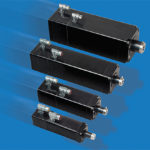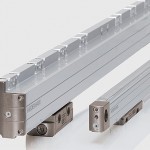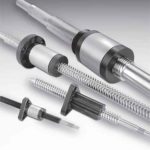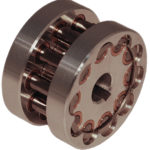Travis Schneider, Product Manager, Automation Group, Parker Hannifin Understanding the pros and cons of different linear screw drive actuators helps you make the best choice for your application. Screw drivetrains are among the most common types of electric linear actuation used in industry today. However, given the range of options available, finding the best solution […]
Picking the right accumulation chain for conveying
For logistics and material-handling applications, chain engineered for accumulating discrete pieces of product is efficient and durable. By Gerhard Hartinger • Key Account Manager | iwis Drive Systems Accumulation chains convey, collect, and separate discrete components. The chains work off electric motors that engage and drive parallel conveyor trains (sometimes called chain strands) on the […]
Selecting linear actuators for valve automation
by Ryan Klemetson, Tolomatic A comparison of industrial gas cylinder valve products and emerging technologies for valve actuation and automation in process industry applications reveals more options than ever for designers. With the demand to improve productivity, increase efficiency and lower downtime in the process control industry, some valve automation applications require increasingly sophisticated motion […]
How to get predictable and reliable linear motion
by Bob Ward, Product Manager, Rollon Corp. Here are some tips on how to correctly specify and size a linear-motor-driven actuator using the mnemonic ACTUATOR—short for accuracy, capacity, travel length, usage, ambient environment, timing, orientation and rates—to remember all the key parameters Choosing the right actuator for a given application may seem like an easy […]
Linear encoders improve accuracy
by Product Management Dept., HEIDENHAIN CORP. Linear encoders boost accuracy by correcting errors downstream of mechanical linkages. Linear encoders track axis position without intermediate mechanical elements. The encoders even measure transfer errors from mechanical linkages (such as rotary-to-linear mechanical devices), which helps controls correct for errors originating from the machine. Thus, this feedback lets controls […]
Can stack can do: Can-stack linear actuator basics (and stage lighting application example)
By Anant Bhalerao, Product Line Manager, Stepper Motors, Portescap • Can stack linear actuators are a good go-to solution for many linear motion systems — including modern stage lighting systems. Can stack motor technology is not new. In fact, it’s a compact and easy option for converting rotary to linear motion. Can stack motors may not […]
Using linear and rotary Hall-effect and reed sensors
by Gwenn Gmeinder, N.A. Busines Development Manager, Sensor Products, Littelfuse Analog and digital sensors are accurate and reliable over the long term. Here we explain how to choose them for industrial automation and motion-control applications. We define and describe the benefits of digital and analog sensors and give industrial examples. Then we apply design principles […]
Don’t rule out leadscrews
by Robert Lipsett, Site Leader and Engineering Manager, Thomson Industries Here we explain where leadscrews excel in linear-motion applications. Then we explain how to apply them. Ballscrews are often the first choice for linear-motion applications because the use of recirculating ball bearings provides high efficiency, load capacity and positioning accuracy. However, with careful attention to […]
Choose the best linear positioning device for your application
by Tony Kliber, Lead Design Engineer, Nexen Group Reviewing the basics about the most popular linear positioning devices will help users properly specify them in their applications. Linear drive systems have been used for thousands of years, as far back as the ancient Egyptians who used tree trunks to move heavy blocks of stones, providing […]
Electric actuators vs. pneumatic cylinders: Total cost of ownership
by Aaron Dietrich, Tolomatic Calculate product yield and utility and maintenance costs for a technology’s service life, and do it early in the process of specifying equipment. Pneumatic-cylinder actuators are durable with low initial cost, so have been a staple in factory automation equipment for decades. They are simple, easy to maintain and provide reasonable […]











